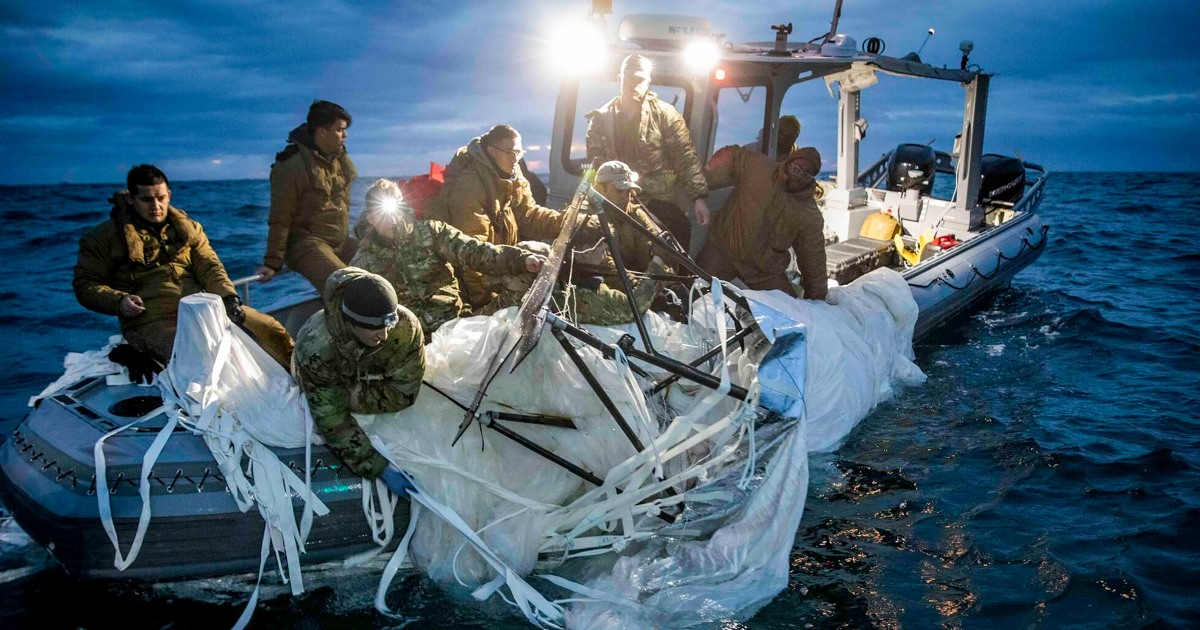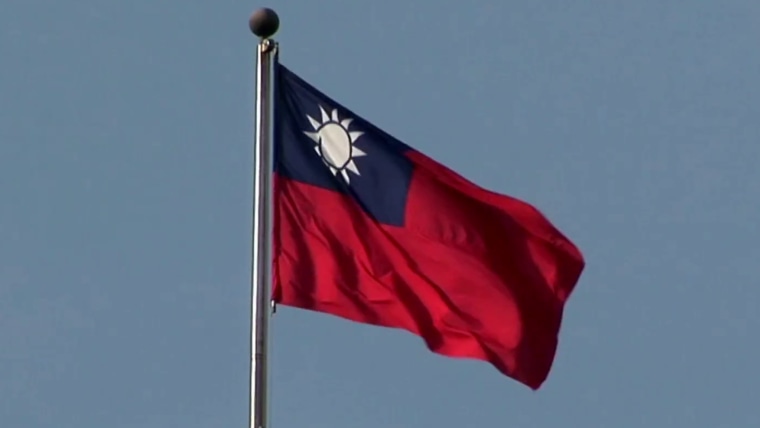HONG KONG — The suspected Chinese spy balloon that flew over the United States early this year used commercially available, off-the-shelf technology that was American-made, according to three US officials familiar with preliminary findings by the FBI.
The officials said the Biden administration first suspected the balloon could be carrying US-made equipment or parts within the first hours after it was detected and that it had sent aircraft to check it out and take photos. They said those suspicions had been confirmed by analysis of debris that was recovered after the balloon was shot down by the US military Feb. 4.
The Biden administration tracked the balloon for eight days as it traveled across Alaska, Canada and the continental US, including over sensitive military sites, before it was downed by a fighter jet off the coast of South Carolina. The results of the analysis by the FBI and other defense and intelligence agencies have not yet been publicly released.
The balloon incident further destabilized relations between the US and China, the world’s two largest economies, and led Secretary of State Antony Blinken to postpone a planned trip to Beijing until this month.
China maintains that the balloon was a civilian airship that strayed off course while conducting meteorological research and that the US overreacted by shooting it down.
“The unmanned civilian airship drifting over the United States was an accidental incident caused by force majeure, and the claim that the balloon was a spy balloon, as well as gathering intelligence, is a complete smear against China,” Chinese Foreign Ministry spokesperson Mao Ning said at a regular briefing in Beijing on Friday.
The presence of US technology on the balloon, which President Joe Biden has described as carrying “two boxcars full of spy equipment,” was first reported by The Wall Street Journal.
News of the findings came as Taiwanese Foreign Minister Joseph Wu warned that Chinese aggression could inadvertently lead to war.
“If you look at the history of war, there are plenty of wars out of accidents, out of inadvertent accidents,” Wu told NBC News’ chief foreign correspondent Richard Engel in an interview Thursday.
He added that his country had inspired Ukrainian forces battling a much larger Russian enemy.
“We have seen the very brave Ukrainian soldiers defending their freedom, defending their sovereignty and that is something we want to learn,” he said.
China claims the self-ruling democracy, which sits about 100 miles off its southeastern coast, as its territory and has said it would be prepared to use force to take control of the island, although it has not laid out any timeline for doing so. However, its military routinely conducts drills nearby, often breaching the unofficial median line down the Taiwan Strait.
Officially, the US discourages conflict but takes a neutral stance, although President Joe Biden has repeatedly suggested he would step in to defend Taiwan.
In an interview with NBC News after his visit to Beijing this month, during which he met Chinese President Xi Jinping, Blinken said the US and China should move on from the balloon incident.
“We said what we needed to say and made clear what we needed to make clear in terms of this not happening again, and so long as it doesn’t, that chapter should be closed,” said Blinken, the first US secretary of state to visit China since 2018.
A day later, Biden drew an angry reaction from Beijing when he described Xi as a dictator who was caught off-guard by the balloon’s appearance over the US
“That’s a great embarrassment for dictators,” he said, “when they didn’t know what happened.”
Though China criticized the remarks as “extremely absurd and irresponsible,” Biden said he didn’t think they would undermine recent diplomatic progress.
“I don’t think it’s had any real consequence,” he said.
The Pentagon said Thursday that the balloon did not collect intelligence before it was shot down.
Pentagon spokesperson Brig. Gen. Pat Ryder did not confirm the report or say what specific equipment might have been on the balloon. But he said it was “not surprising” given that China has been known to use “off-the-shelf, commercial US components” in the past.
He said that while the Biden administration was aware that the balloon was capable of gathering intelligence, it did not appear to have collected any sensitive information as it flew over the US, thanks in part to steps that Washington took to “mitigate” such a collection.
“We believe that it did not collect while it was transiting the United States or flying over the United States, and certainly the efforts that we made contributed, I’m sure,” he told reporters Thursday.
Richard Engel, Charlotte Gardiner and Luna Huang contributed.


